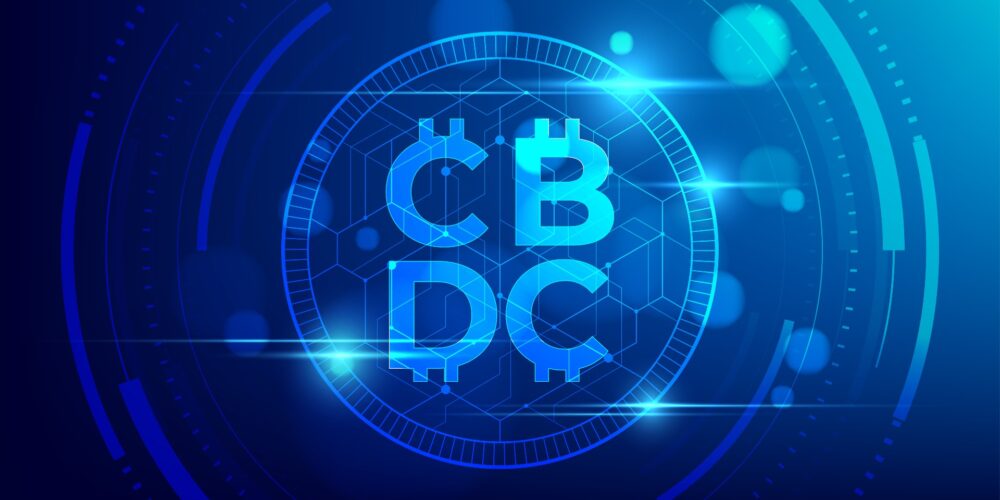In a powerful stance at the annual meeting of the World Bank Group and the International Monetary Fund, Reserve Bank of India Governor Sanjay Malhotra has called for central banks worldwide to champion the development and adoption of central bank digital currencies (CBDCs) over stablecoins. He stressed that fostering a global CBDC network would significantly enhance the speed and security of cross-border payments, illuminating the urgent need for unified action among countries.
Understanding CBDCs: A Superior Alternative
Central bank digital currencies (CBDCs) stand out as crucial tools for modernizing financial systems. Unlike stablecoins, which often rely on private sector backing and can be subject to market volatility, CBDCs are fiat currencies directly issued by central banks. This ensures the singularity and integrity of money, vital for maintaining public trust and effective monetary policy. “Stablecoins… fall short of the requirements as a mainstay for monetary systems,” Malhotra stated, emphasizing that CBDCs offer fundamental advantages, including better capital account controls and anti-money laundering mechanisms.
Moreover, CBDCs can lower the costs associated with cross-border payments. By facilitating transactions that bypass traditional banking infrastructure, they can potentially reshape how countries interact monetarily. As the Governor remarked, “In India, we are of the view that the CBDC is the answer for cross-border payments… so all of us need to promote that.” This vision underscores the essential role CBDCs could play in reshaping global finance.
India’s Progressive CBDC Initiatives
The Reserve Bank of India has taken bold steps towards implementing CBDCs, launching wholesale and retail pilot programs in 2022 that showcase potential efficiencies they can bring to financial markets. The wholesale pilot, involving major banks such as the State Bank of India and HDFC Bank, tested CBDC settlements in government securities, while the retail initiative engaged approximately seven million users through digital wallets.
As part of these efforts, the RBI is exploring the tokenization of financial assets, including Certificates of Deposit, to enhance transaction speed and security. Malhotra noted that “tokenization can revolutionize the way assets are traded and held,” indicating a broader financial market modernization strategy. Initial results are promising, with improved market efficiency reported from pilot programs, laying the foundation for a transformative approach to finance.
Leveraging UPI for Economic Growth
India’s Unified Payments Interface (UPI) is another keystone of its digital payments ecosystem, accounting for 85% of the nation’s digital transactions. With over 20 billion monthly transactions valued at more than $280 billion, UPI has become a driver of financial inclusion. It empowers small vendors and micro enterprises to accept digital payments, helping them establish credit histories and gain access to broader financial resources.
Research has revealed that increased adoption of UPI significantly diminishes cash demand, with studies linking a 1% increase in UPI transaction volume to a 0.03% boost in GDP growth. “UPI is a powerful catalyst, accelerating financial inclusion,” Malhotra proclaimed, indicating that the infrastructure supports not only economic dynamism but also enhances individual financial empowerment.
Innovating Digital Infrastructure for the Future
The RBI is also committed to enhancing the Account Aggregator framework, which serves around 160 million accounts. This initiative aims to bolster data sharing and security in financial transactions. It’s a step toward creating a more integrated financial ecosystem where users can seamlessly share their financial information with regulated institutions.
Moreover, the RBI is launching advanced products, such as AI-based UPI HELP and IoT Payments, to streamline user experiences and enhance transaction ease. “The Account Aggregator framework is empowering individuals to share their financial data safely,” Malhotra stated, highlighting the initiative’s role in enhancing consumer trust and engagement in the digital landscape.
A Global Call to Action for CBDC Adoption
As India makes strides in its CBDC initiatives, the RBI is extending its focus to cross-border projects, including partnerships with other nations to implement cooperative digital currency frameworks. The recently established UPI-PayNow linkage with Singapore marks a significant step forward, with plans for expansion to other countries in motion.
However, Governor Malhotra cautioned that the benefits of these innovations hinge on a collective international adoption of CBDCs. “Unless other countries also adopt CBDC, we are not going to see the benefits…,” he urged, advocating for multilateral cooperation to ensure that the full potential of CBDCs is realized across borders. The call for collaboration is a crucial reminder that innovation in digital currencies is a global endeavor, necessitating shared goals and unified efforts.
Charting a New Course for Global Finance
The call from the RBI to prioritize CBDCs over stablecoins resonates deeper than mere financial policy; it encapsulates a vision for a more resilient and inclusive financial future. As countries grapple with evolving digital currency landscapes and the integration of CBDCs into their monetary frameworks, there lies an extraordinary opportunity to redefine cross-border payments and foster global economic integration. The path ahead demands cooperation, strategic planning, and a commitment to innovation, positioning CBDCs as the backbone of the future financial system.





